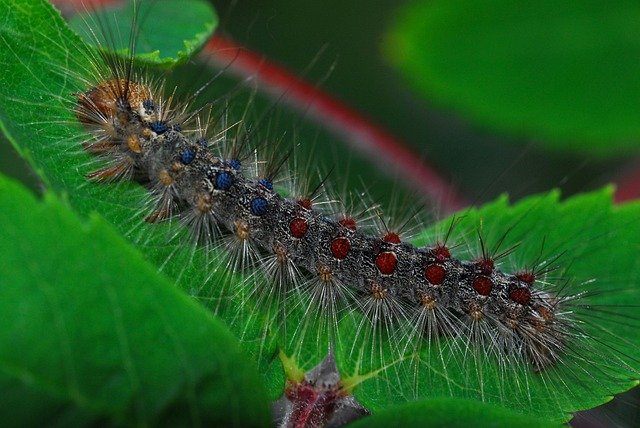A destructive pest threatening forests
What is it?
Spongy moth (EGM; Lymantria dispar dispar) is an invasive and destructive pest that poses a risk to deciduous and coniferous tree species.
Trees at risk
Impacts
- A single spongy moth caterpillar can eat one square metre of leaves in a season
- Repeated defoliation makes trees susceptible to other pests and diseases, and can eventually lead to tree death
- Defoliation in orchards can increase vulnerability to agricultural pests and diseases and can negatively impact farm stock
- Loss of species in natural areas can affect biodiversity and forest wildlife
Life-Cycle

Eggs: Tan-coloured and can be found on tree trunks, bark, or other hard surfaces. Egg masses are about 4 cm and contain 100- 1,000 eggs.
Larvae: Charcoal grey with a double row of five blue and six red dots on its back. This is the life stage that causes defoliation.
Adult females: Larger than males with white colouring and dark zig-zag markings. Adult females are flightless.
Adult males: Greyish-brown with dark markings and can fly and survive about one week, mating with several different females.
How to manage Spongy Moth
| Monitoring |
| Monitor for defoliation and egg masses throughout the season on high-risk trees. Inspect outdoor equipment, trailers, and vehicles before moving from a regulated area to an non-infested area and always buy and burn local firewood. |
| Hand Removal |
| Egg masses should be removed from trees between August and May to reduce infestations in forthcoming years. Use a scraper to carefully remove the masses off of tree trunks, branches, and outdoor equipment throughout all seasons. After removal, dispose of masses in a soap and water mixture or burn them. |
| Biological Control |
|
For private homeowners, Btk (Bacillus thuringiensis kurstaki) is available for purchase from local hardware stores to use against EGM. This biopesticide can be applied by a registered pesticide application company or by homeowners who have carefully read application instructions. Btk is a product that affects the digestive system of caterpillars and should only be applied between May and early June, when EGM are still in the larval (caterpillar) stage. Two spray applications are usually required for effective control. Application of Btk after mid-June is not an effective way to manage EGM. Spongy moth populations are also affected by a number of pests, including mice, birds, wasps, and a specific fungus and virus. The fungus and virus are believed to be the reasons gypsy moth populations crash for ten or more years. |
| Burlap/Trapping |
| Caterpillars can be successfully trapped using burlap. Start by wrapping a 45 cm (18 in) wide strip around the tree at chest height. Tie a string around the centre and fold the top portion down to form a skirt, with the string acting as a belt. Pick off the caterpillars daily and dispose of them (see hand removal above). |
CAUTION: Spongy moth caterpillars have long hairs that can cause skin irritation or allergic reactions for some people. For safety, use gloves while handling caterpillars.
Report sighting of Spongy Moth to:
EDDMapS Ontario: 1-800-563-7711 or www.eddmaps.org/ontario
Canada-wide: www.invasivespeciescentre.ca/report-a-sighting

